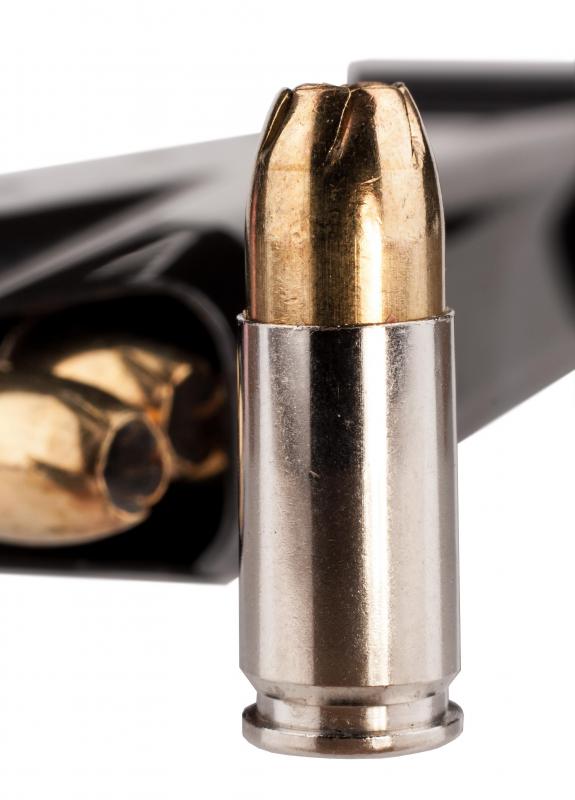At WiseGEEK, we're committed to delivering accurate, trustworthy information. Our expert-authored content is rigorously fact-checked and sourced from credible authorities. Discover how we uphold the highest standards in providing you with reliable knowledge.
What Are Exit Wounds?
Exit wounds are the wounds made when a projectile exits the body. The term typically refers to punctures made by gunshot wounds, but can refer to any wound made by a fast-moving object that forcefully enters the body in one location and leaves in another. Exit wounds are usually larger and more irregular than entrance wounds, and typically require special care.
When a fast-moving projectile, such as a bullet, enters the body, it does so at an uninterrupted pace. The force of the bullet slams into the flesh, leaving a relatively clean and well-rounded wound. As the bullet travels through the body, though, it meets resistance from organs and other internal structures. This causes it to slow down and adds to the overall amount of damage. With less force behind it, the bullet has to work harder to exit the body, resulting in messier, less regular exit wounds.

Exit wounds differ depending on the type of penetrating object. Certain bullets cause more damage than others, and in some cases the exit wound can actually be smaller and cleaner than the entrance wound. This most often results when the gun is fired very close to the body. Forensic specialists can often determine the type of gun and bullet that was used based on the entrance and exit wounds.

Caring for exit wounds is similar to caring for any major wound. The medical team’s first concern is preventing excessive blood loss. Losing a large amount of blood quickly can send the victim into shock and make it difficult to replace the fluid fast enough to prevent death. Once bleeding is controlled, and the vital organs are evaluated and, if possible, repaired, the team can focus on cleaning and repairing the wound.
Infection is one of the greatest concerns when caring for exit wounds, as the risk of infection increases when foreign matter passes through the body. A larger wound may also have a greater chance of becoming contaminated than a smaller wound. Infection control begins with cleaning the area around the wound and closing the opening of the wound with sutures. In some cases, the wound may need to be packed with sterile gauze to help it heal from the inside out.
Unlike accidental wounds, entrance and exit wounds caused by bullets require meticulous care in maintaining the integrity of the evidence. Doctors and nurses may be required to photograph the wounds or preserve any pieces of the bullet that are retrieved from the body. While assisting in the collection of evidence should never come at the expense of the best possible patient care, it is still an important aspect of caring for gunshot wound victims.
AS FEATURED ON:
AS FEATURED ON:












Discuss this Article
Post your comments